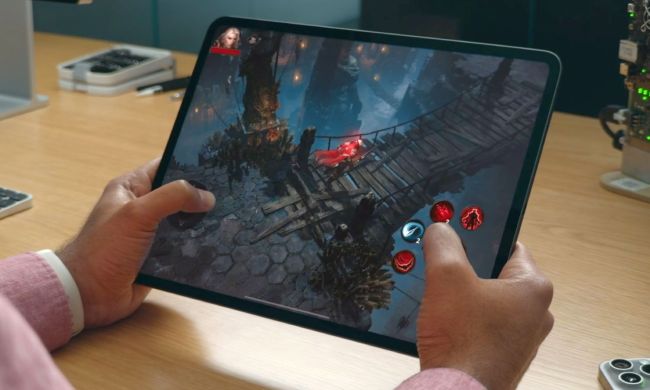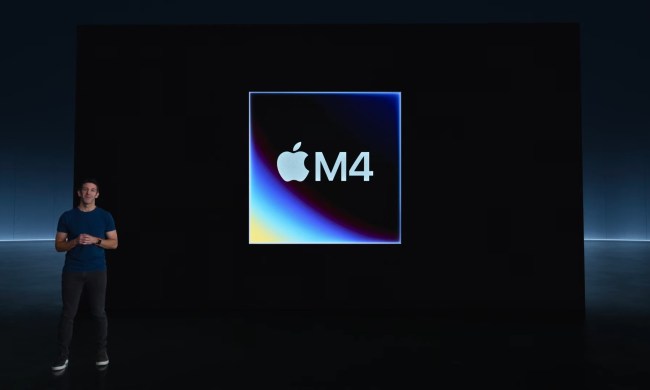
A few years back, I was invited to meet with Apple about its new push into gaming. The company wouldn’t show me a flashy new product to enable that. Instead, it showed me something more modest: No Man’s Sky running smoothly on a MacBook. It looked great, but it wasn’t exactly earth-shattering. It was an independent game from 2016 running on a laptop as well as it had already been running for years on other PCs. I got the sense that I wasn’t there to cover a big development in tech, but rather to see a proof of concept that had bigger plans attached.
Years later, those plans are coming into focus even if they still aren’t fully realized yet. I recently attended a repeat of that showcase, only this time I wasn’t just watching an eight-year-old game running on a laptop. I demoed several games, including brand new ones, this time running on a range of devices including the MacBook Air M3 and a 13” iPad Pro M4. While we’re still a long ways away from the App Store being up to snuff with Steam on Windows, I’m starting to see where gaming on iOS is headed — and Apple is getting there faster than I expected.
Growing gaming
During my recent session with Apple, I’d get to see and play several games running across iPhone, iPad, and Macbooks. Some of those experiences are more exciting for Apple than for casual players. It’s neat that Resident Evil 7 can run well on an iPhone, but that’s not so surprising when I already know that the much more recent Resident Evil 4 does too. I’m happy to see games like Control and Valheim looking great, but those are existential wins for Apple as it seeks more partners to expand its gaming efforts. I don’t imagine that gamers are jumping to play games that have been out for years on an Apple device (and according to reports, they very much aren’t yet).
That’s not to say that what Apple is doing with those games isn’t impressive, though. One highlight of my session came when I got a look at Diablo Immortal running on the iPad Pro M4. On paper, that’s not very exciting. It’s a mobile game running on a capable tablet. So what? What made that experience stand out is that I saw it running with

The headline is that Apple’s latest devices are very capable of running recent games, but that’s never been the main concern. The real question is whether or not Apple can convince enough partners to launch their new games on Apple devices alongside other platforms. Sure, there’s no harm in putting Resident Evil 2 on the App Store, but will Capcom take the next step and release Monster Hunter Wilds on Mac at launch? That’s the real hurdle.
Apple seems cognizant of that, which is perhaps why a big part of the showcase’s focus was on much newer games. I got to play an early build of Palworld running on a MacBook Air M3, and it already feels well optimized. Considering that Palworld is only currently available on PC and Xbox, a smooth move to Mac at this stage is a clutch partnership to land. The survival crafting RPG is a phenomenon (even if its growth has slowed since launch) and getting it before it’s available on PlayStation helps sell the idea that Apple could be a serious gaming platform.
The most crucial demo I saw was of Frostpunk 2 running on a MacBook Pro M3. The strategy game is poised to be a hit among PC players in September, and MacBook users will be able to buy it there on day one. I can’t quite speak to how well it’ll run there yet as I saw an unfinished build in action, but it doesn’t seem like Apple’s machines will struggle to keep up with it. In fact, they do the snowy city-building game justice by bringing out the contrast between the harsh whites of its landscapes and the dark machinery powering its civilizations. It’s the exact kind of game that Apple has needed for years to sell its vision: A new, high-powered release launching on Apple devices alongside every other platform and keeping pace with them.

The first big test
One game isn’t enough, though. Apple will need to land that trick more consistently if it’s going to sell its gaming ecosystem, which is an enticing one that lets players share game progress and ownership across all iOS devices. Frostpunk 2 will be the first big test, but the real main event will be later this fall when Assassin’s Creed Shadows launches on iPad and MacBooks at the same time as PS5 and other platforms. Will gamers actually show up for it, won over by the idea of being able to seamlessly swap between Mac and tablet? Judging by the reportedly anemic sales for Assassin’s Creed Mirage, I don’t imagine it’ll take the world by storm.
But Apple has been playing small ball for the past few years, racking up modest wins that are starting to stack up fast. We’ve gone from one old game running on Macbook a whole console generation after its release to two current-gen games releasing on Apple devices at the same time as they come to Windows PCs. Apple’s Game Porting Toolkit 2 is enabling that to happen even faster. I saw a Windows version of Control running through the tool on Mac, and it was already running smoothly from that environment without a single alteration. The growth is more rapid than you likely realize, and it gets more exponential with each passing year. Apple just needs to hope that its audience size expands at the same rate.



